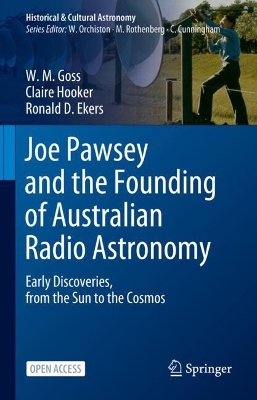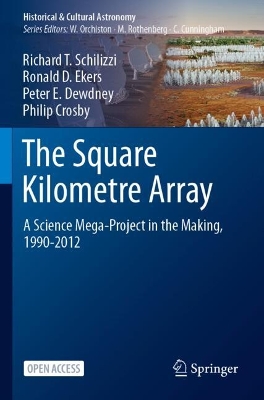Historical & Cultural Astronomy
2 total works
Joe Pawsey and the Founding of Australian Radio Astronomy
by W. M. Goss, Claire Hooker, and Ronald D. Ekers
This open access book is a biography of Joseph L. Pawsey. It examines not only his life but the birth and growth of the field of radio astronomy and the state of science itself in twentieth century Australia. The book explains how an isolated continent with limited resources grew to be one of the leaders in the study of radio astronomy and the design of instruments to do so.
Pawsey made a name for himself in the international astronomy community within a decade after WWII and coined the term radio astronomy. His most valuable talent was his ability to recruit and support bright young scientists who became the technical and methodological innovators of the era, building new telescopes from the Mills Cross and Chris (Christiansen) Cross to the Parkes radio telescope.
The development of aperture synthesis and the controversy surrounding the cosmological interpretation of the first major survey which resulted in the Sydney research group's disagreements with Nobel laureate Martin Ryle play major roles in this story. This book also shows the connections among prominent astronomers like Oort, Minkowski, Baade, Struve, famous scientists in the UK such as J.A. Ratcliffe, Edward Appleton and Henry Tizard, and the engineers and physicists in Australia who helped develop the field of radio astronomy. Pawsey was appointed the second Director of the National Radio Astronomy Observatory (Green Bank, West Virginia) in October 1961; he died in Sydney at the age of 54 in late November 1962.
Upper level students, scientists and historians will find the information, much of it from primary sources, relevant to any study of Joseph L. Pawsey or radio astronomy.
This is an open access book.
The Square Kilometre Array
by Richard T. Schilizzi, Ronald D. Ekers, Peter E. Dewdney, and Philip Crosby
The Square Kilometre Array (SKA) is a grand vision project to build the most sensitive radio telescope in the world. This open access book tells the story of its development – a story of transformational science, innovative engineering, and global collaboration. Its journey has been long and complex, reflecting the many issues faced in creating an affordable design, choosing a site, and developing a viable global organisation starting from a simple working group of far-sighted and persistent astronomers in 1993.
The book begins with the emergence of the SKA concept and the first working group. It traces the development of global scientific and engineering collaborations and ever more comprehensive governance structures for the SKA, the involvement and roles of funding agencies and governments, and the long, political site selection process. This occurred alongside efforts to overcome technical barriers and the difficult process of selecting technology. It follows these themes up to the point in 2012 when the project had just transitioned from a collaboration to a legal entity and the dual site decision was made – a pivotal moment when it was clear the SKA arrays would be built.
The book is based on the authors’ personal experience at the leading edge of the project over many years, as well as access to hitherto unpublished material from project archives, interviews, and presentations from many of the key players at a specially convened conference. It has a Foreword written by John Womersley, former Chair of the Agencies SKA Group and SKA Organisation Board. The book is intended for an audience ranging from funding agencies and governments involved in major research infrastructures, to historians of science and professional researchers studying mega-projects, to the astronomy and physics communities in general and interested lay readers.

